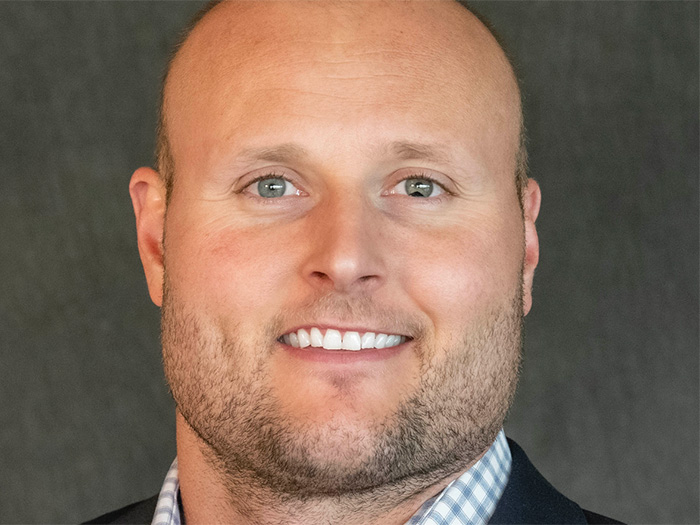Risk Scenario
How a One-Two Weather Punch and AWOL Adjusters Became a Property Program’s Perfect Storm
Disclaimer: The events depicted in this scenario are fictitious. Any similarity to any corporation or person, living or dead, is merely coincidental.
PART ONE: SLOW TRAIN A COMIN’
Risk managers never sleep easy, nor do they take anything for granted. Charlene Schultson, the Executive Vice President Commercial, North America, for the Patriot Mutual Insurance Company, is no exception.

What she’d like to do is ease back and celebrate the fact that her beloved and long-suffering New York Giants have made the playoffs.
Schultson might be able to keep an eye on the game this weekend, but she’s also got plenty of weather events to keep her attention on this Friday afternoon. For one, headache already, a big blustery Nor’easter has skirted the Carolinas and is sluggishly, menacingly, making its way toward the Northeast.
It’s not the speed of the storm that has Schultson worried. It’s the storm’s volume and its potential to push millions of gallons of icy sea water into Lower Manhattan and beyond that is making her uneasy.
Patriot’s commercial portfolio has a sizable concentration of office buildings and other assets in Manhattan worth a total insured value in the hundreds of millions. But the exposures don’t end there. The insurer also has accumulated risks in Boston, Rochester and Buffalo. The portfolio in those cities includes not just office space but some retail and residential mixed-used policies.
Adding to Schultson’s never ending list of worries is that a brutal cold front is moving down from Canada. It’s projected to cast temperatures in the single digits over much of New York State and New England. A heavy load of the white stuff is also forecast. She makes a mental note to check in with Patriot’s catastrophe management (CAT) teams to better understand the potential financial implications of these events if they strike concurrently.
PART TWO: PREPARE THE STORMTROOPERS
Not 10 miles from where Ms. Schultson is hunkered down in front of her laptop, her colleague, Frank Boyer, the Executive Vice President for Property, North America, for Patriot Mutual Insurance Company, is doing his own calculations from the 34th floor of an office building on Water Street.

Like Schultson, Boyer is well aware of the potential these two coinciding weather events have for losses. Patriot Mutual is a big player in Northeast U.S. property risk transfer, but neither of these two executives have a holistic view of the exposure of these overlapping lines.
In advance of the Nor’easter’s arrival in New York, Boyer has messaged his claims colleagues that he wants to make sure the company’s adjusters and any freelance adjusting assistance are ready to go into action if bad things happen.
“Are we good to go here?” Boyer asks his EVP for claims, as the storm advances. “With all that’s about to happen, I don’t want us to get caught flat-footed on the claims handling side,” he adds.
“We’re good to go,” the EVP of claims confirms. “If any of our in-house claims folks get hung up for any reason, I have about two dozen contractors on backup,” he says.
By midday on Saturday, bad things are happening. While the Nor’easter was rightly feared, it’s actually the Canadian cold front that tragically tips the scales.
Heavy snows and unexpectedly fierce winds cause blackouts in much of the Northeast. The cold front’s seemingly never-ending barrage knocks out power to more than 5 million people in a straight line from Buffalo and Rochester, through Syracuse and on towards the East Coast.
By Sunday, both Charlene and Frank are scrambling to reach anyone who can provide an accurate picture of the damage to their portfolios.
Frank Boyer, himself bereft of any hope of enjoying a leisurely Sunday, is getting reports from the claims and adjuster teams about the Manhattan losses. The sea damage in Manhattan is severe, with losses in the mid hundreds of millions, mostly from office buildings that weren’t properly defended against the sea surge.
The Manhattan losses are big, but that’s not what irks him. What’s peaked his anxiety is that he can get next to no information from points West and North. Roads are impassible in many places, cell phone service has been interrupted and very few adjusters are out there adjusting.
Desperate for answers, Charlene reaches out to a close friend and former colleague from a rival firm. “You know I have to tell you Charlene, that we are not having these difficulties, and we’ve already issued payments within our residential portfolio” her friend tells her as they swap war stories over coffee on Tuesday of that week.
“Why…” Charlene attempts to begin a question but her friend interrupts her.
Her friend shares that her company uses technology-aided enterprise location strategies and is seeing very little delay in getting accurate projections on the severity of the damage to its customers.
“Before they even call us to file a claim, we’ve run damage assessments to expedite known losses,” her friend says, without divulging too much more on their competitive advantage.
“I take it Patriot doesn’t have a location strategy,” her friend continues.
There is then an awkward silence.
“I don’t know. I’ve seen maps, but I don’t know,” Charlene answers weakly.
“Find out. It may be too late now, but find out,” her friend implores.
Frustrated and feeling defeated, neither Charlene nor Frank seem to be able to get the actionable information needed to understand the financial loss, let alone begin making their customers whole again. Making matters worse, calls to Patriot Mutual Insurance aren’t being answered very quickly – further alienating their policyholders on both the personal property and commercial side. With no eyes on the ground to report the amount of actionable claims data needed, the company’s ability to communicate is as frozen as Oneida Lake, outside of Rochester.
“What’s happening over there?” One exasperated parent says as their family continues to take temporary shelter in the only generator powered motel outside Poughkeepsie.
PART THREE: WINNERS AND LOSERS
It’s now the Thursday after the Saturday when two major weather events acted like a pincer to squeeze what is eventually determined to be about $750 million in property values from the State of New York.

Charlene Schultson’s knows her client’s opinion of Patriot Mutual Insurance Company is tarnished. Patriot’s dependable customer service and competitive pricing strategy for years a lynchpin of their brand value, now gone through the floorboards like the melting icing inhabiting their customers structures. Charlene’s friend’s company however, is still in good standing with their customers. Her focus and interest in professional football has evaporated.
Allison Crestlake, CEO of Patriot Mutual Insurance Company, isn’t in a mood to spare anyone’s feelings when she convenes an emergency meeting at 2 pm on that Thursday, where both Frank and Charlene meet for the first time since the storm. Allison knew the damage the storm had caused, both financially and in terms of brand value, and she gave it to her team straight, with no cream or sugar.
“How come almost every major carrier we compete with had some understanding of the impact by Tuesday? We had next to nothing, outside of what we could see with our own eyes in the City.” is the gist of her grievance – preparing for what she would have to tell the board when they inevitably call for someone’s job.
The heat isn’t as heavy on Charlene Schultson as it is on Frank Boyer, but it’s still a very unpleasant winter week for everyone. Not to mention the teams responsible for risk accumulation models which failed to see the high-loss potential of their policy concentration.
“Did you not know that our adjusting capabilities were this weak?” was another hard-to-swallow pill Allison dropped in the meeting.
The claims process is excruciatingly long, but the Patriot Mutual Insurance Company’s customers are eventually made whole for its dual winter storm losses. Although the financial costs were significantly higher than their rivals due to a late start and rising contractor rates, what isn’t as recoverable is their reputation in the market.
A promise to pay is simply that and nothing else will do, really. Patriot’s inability to move with expediency in the aftermath of the winter storms will haunt its reputation and dog its top line growth for years to come.
Oh, and by the way, the Giants lost the game. &
![]()
Risk & Insurance® partnered with ESRI to produce this scenario. Below are ESRI’s recommendations on how to prevent the losses presented in the scenario. This perspective is not an editorial opinion of Risk & Insurance.®
Patriot Mutual Insurance Company was impacted by a series of concurrent severe weather events, leading to significant primary and peripheral losses within both their property and commercial portfolios. However, the insurer’s inability to maintain situational awareness may have been costlier than the storms. Significant delays in obtaining actionable intelligence on the damages resulted in poor customer experiences and irrecoverable reputation damage.
Despite the widespread damages of these overlapping incidents, an enterprise geospatial strategy powered by geographic information systems (GIS) may have helped streamline response efforts, before, during, and after they occurred. An enterprise geospatial strategy creates a data framework to integrate and contextualize disparate data streams. This empowers carriers to:
- Avoid asymmetric information failures. Adverse risk selection can be avoided when the underlying data used for making decisions leverages a spatial context, so that underwriters, risk managers, and actuaries all share a common basis for decision making. In this scenario, Patriot Mutual Insurance Company did not have a single source of truth to guide their underwriting decisions, and there were hidden risk concentrations that weren’t realized until after losses occurred.
- Create a digital twin of an insurance portfolio so that insurance leaders can visualize their entire book of business across product lines. In this scenario, Patriot’s managers worked in disconnected environments and were not able to overlay policy locations with storm severity to see where damages likely occurred.
- Forecast potential damages across multiple “what if” scenarios. Prior to the Nor’easters landfall, Patriot’s competitors who utilized geospatial tools were able to forecast several scenarios to see which policies would likely be impacted. Given the impending risk of the Northern cold front, those firms were able to combine projections to determine where they would likely experience losses at a hyperlocal scale.
- Leverage AI/ML workflows for damage assessment to expedite claims processes. By integrating and contextualizing disparate data through a geospatial filter, Patriot’s competitors could leverage third party data sources to get an accurate picture of impacted communities that were without power. This holistic picture of the immediate and peripheral damages expedites claims processing, by empowering insurers to know the location and severity of impacted policies before the first calls come in from policyholders.











